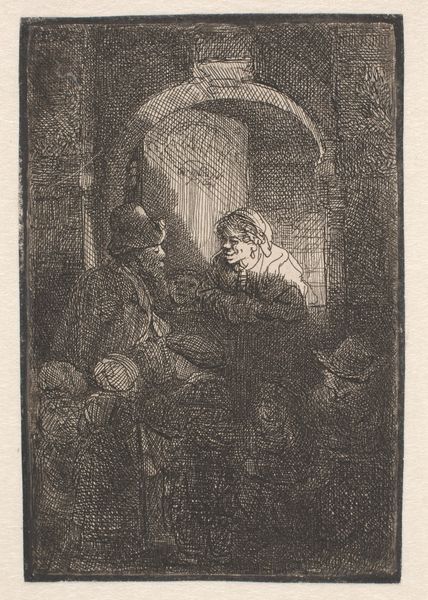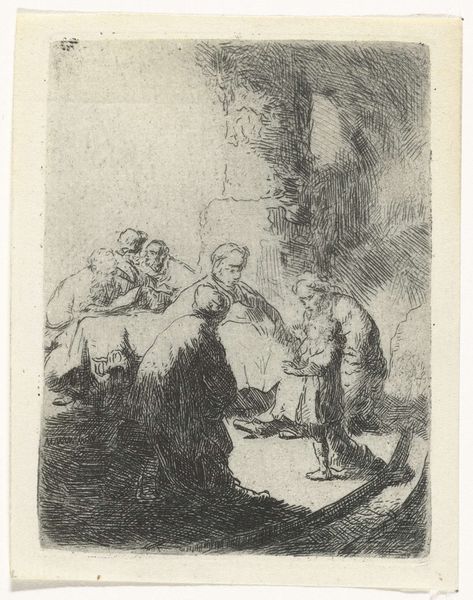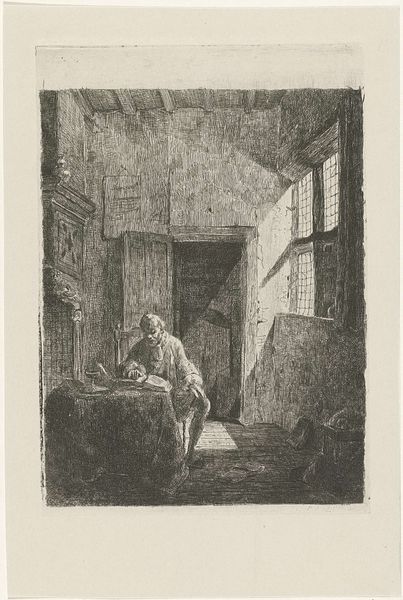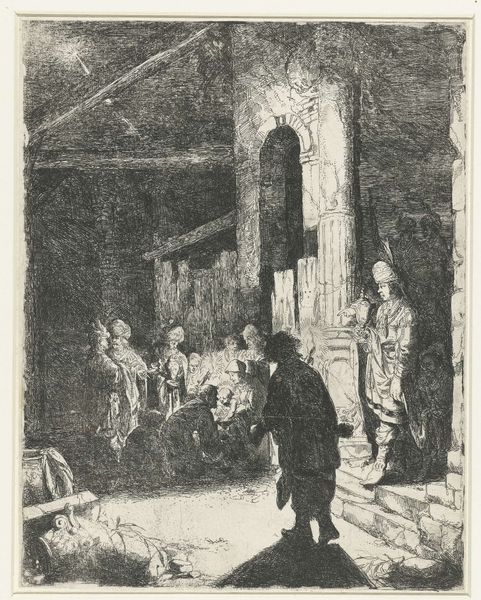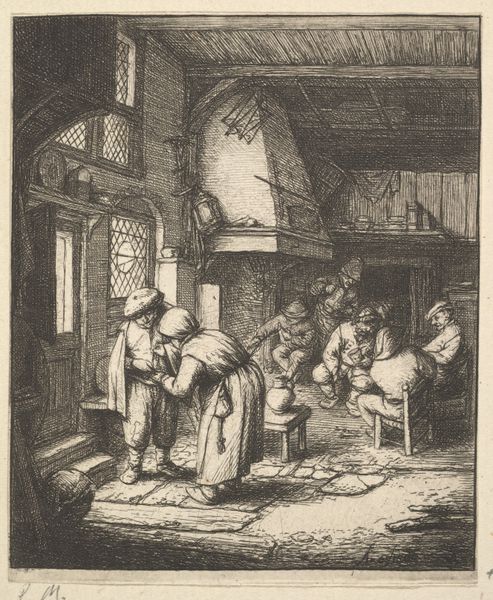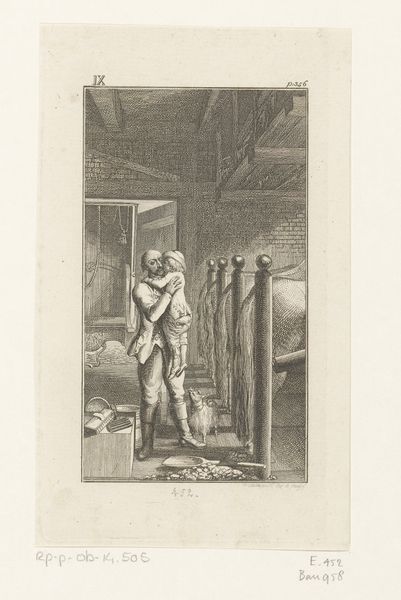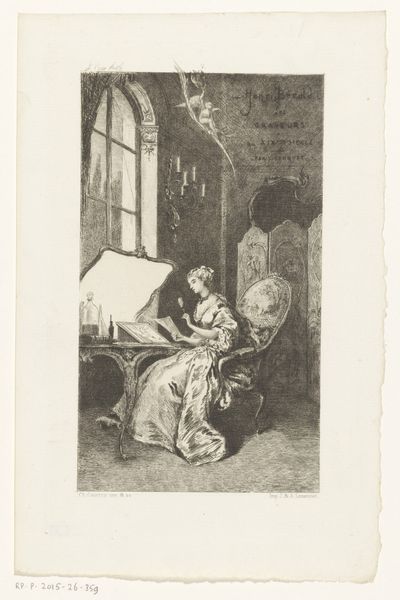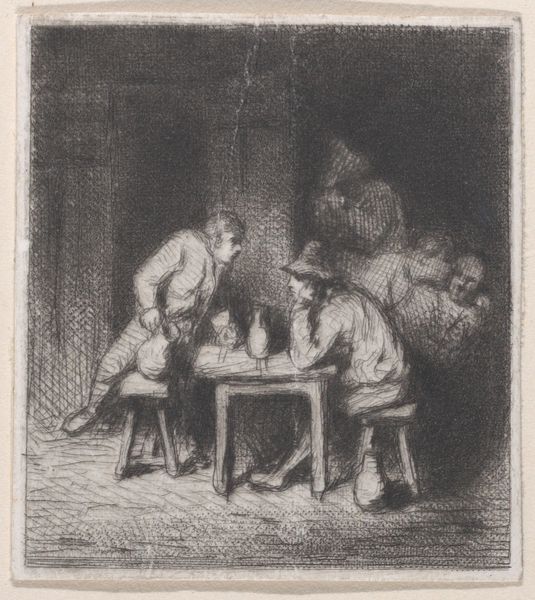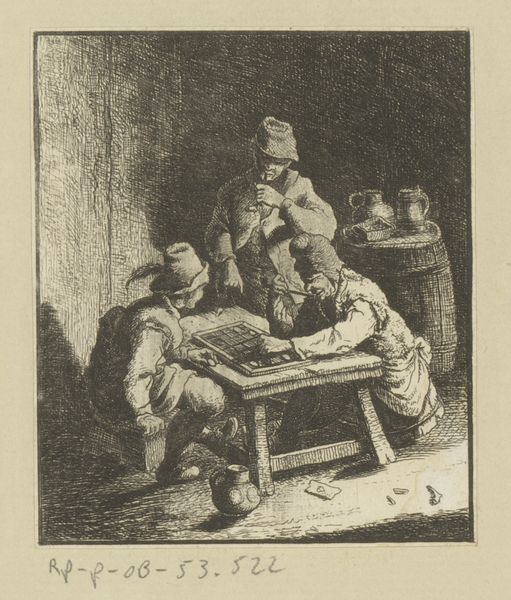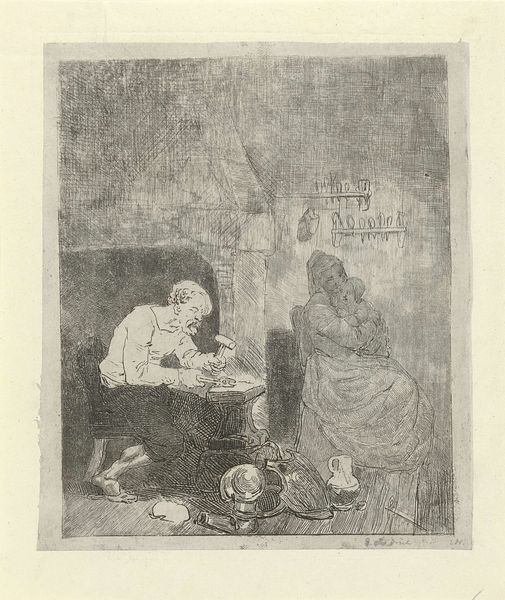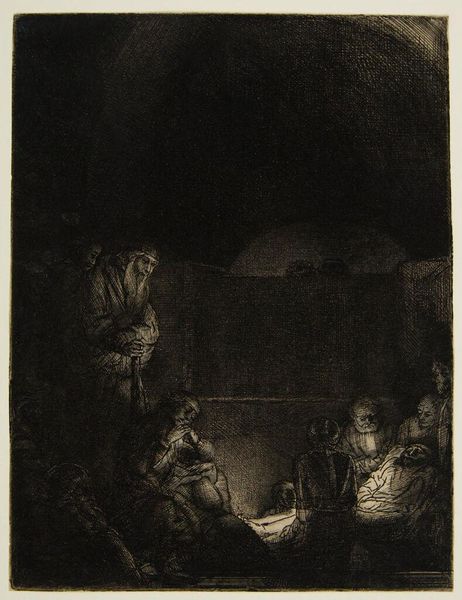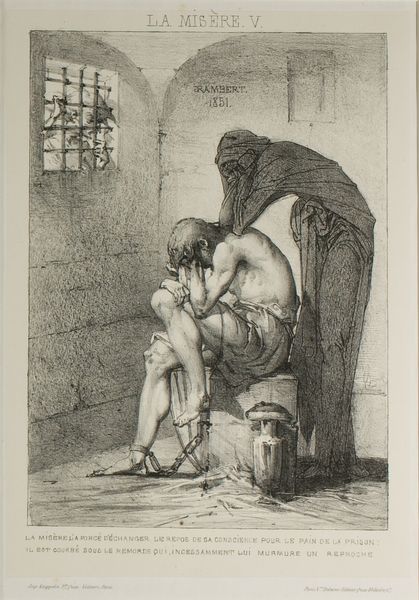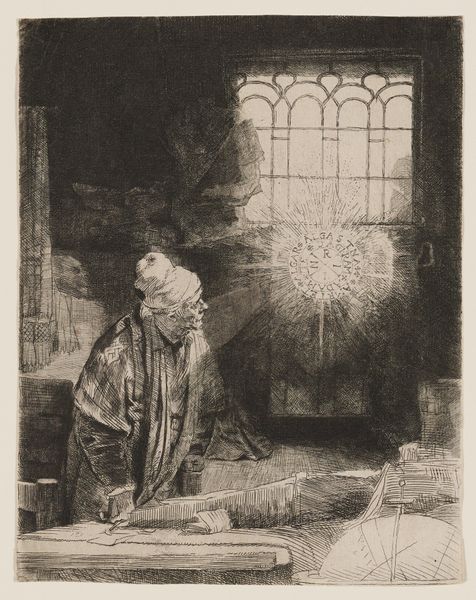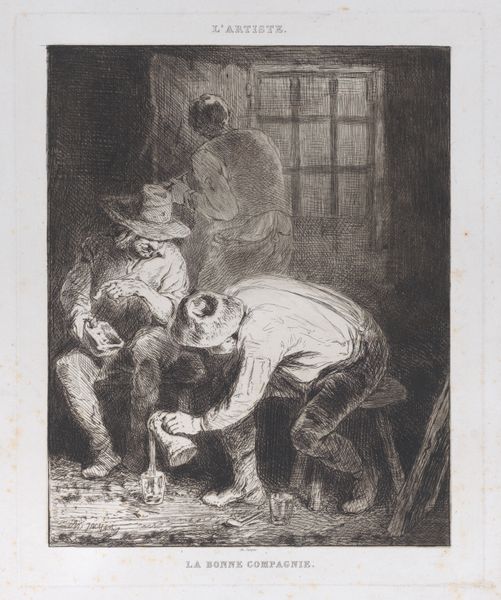
In the shadow people are weeping and praying, surrounded by others who are exhorting them (plate 6) 1896
0:00
0:00
drawing, graphite
#
drawing
#
narrative-art
#
landscape
#
figuration
#
pencil drawing
#
line
#
symbolism
#
graphite
Copyright: Public domain
Editor: This drawing, "In the shadow people are weeping and praying, surrounded by others who are exhorting them" by Odilon Redon, dates to 1896, and it's graphite on paper. It’s striking how Redon uses darkness and light. It feels intensely religious and somber, but I’m not quite sure why. How do you interpret this work? Curator: Considering Redon's involvement in Symbolism and the late 19th-century social climate, I view this as a powerful commentary on institutionalized religion and the psychological impact of its structures. Notice the figures huddled in the shadows, while others stand taller, seemingly 'exhorting.' Doesn't this positioning imply a power dynamic? Editor: Yes, I see that now. It’s like the figures in shadow are seeking comfort, and those standing over them are…maybe enforcing a certain dogma? Curator: Precisely. Redon was working during a time of immense social and political upheaval, a period when many questioned traditional authorities, including the Church. His "noirs," like this drawing, often explore these anxieties. The heavy use of shadow might represent the obscurity and oppressive nature of established power, wouldn’t you say? Editor: Definitely. The window above them, with what looks like bars, also suggests confinement, not just physical but also mental or spiritual. So Redon might be critiquing how religious institutions controlled individuals during that time? Curator: That’s a strong possibility. Remember, art doesn't exist in a vacuum. The late 19th century was a crucible of ideas. Symbolist artists frequently grappled with questions of faith, doubt, and the individual's role within society. Understanding the historical context is essential in unveiling these layers of meaning. Editor: This really gives me a new appreciation for the piece! I hadn’t considered the socio-political aspect, but it adds so much depth. Thanks! Curator: Indeed, the beauty of art history lies in connecting artworks to broader social and political conversations. I also learned, understanding your interpretation, a new perspective of the powerful and moving window in the image.
Comments
No comments
Be the first to comment and join the conversation on the ultimate creative platform.
